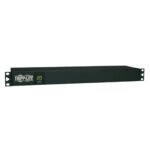10 RFID Integration Tips to Prevent Costly Mistakes in Logistics

How do some logistics companies run smoothly while others face constant delays and inventory issues? The secret often lies in RFID in logistics. RFID, or Radio Frequency Identification, is a technology that helps track items in real time, making operations faster and more accurate.
If you want to use RFID in supply chain management without overspending or falling into common traps, this guide is for you. Here are 10 tips to ensure your RFID setup works flawlessly and keeps your logistics running smoothly.
1. Choose the Right RFID Tags for Your Products
One of the most crucial steps in RFID implementation is selecting the right tags. Not all RFID tags are created equal; different tags work better under certain conditions. Here are a few things to consider:
- Material Compatibility: Some tags function well on metal surfaces, while others don’t. If you work with metals or liquids, choose tags specifically designed for those materials.
- Environment Suitability: Cold storage, high heat, and other environmental factors can impact RFID tag performance. Pick tags suited to your storage conditions.
- Reading Range: Different tags have different ranges. For instance, a long-range tag may be perfect for warehouse use but unnecessary in a small stockroom.
2. Set Clear Goals for RFID Use
Before diving into RFID in logistics, set clear, measurable goals. Ask yourself what you want to accomplish:
- Inventory Tracking: Do you want to know exactly where every item is in your warehouse?
- Reduced Shrinkage: Are you looking to reduce loss and theft?
- Improved Shipping Accuracy: Would you like to minimize mistakes in order fulfillment?
3. Invest in Quality RFID Readers
RFID readers are just as essential as the tags themselves. Even the best RFID tags can fail to deliver accurate data without high-quality readers. Here’s why quality readers are a must:
- Error Reduction: High-end readers are more accurate and reduce missed tags or incorrect readings.
- Longevity: Cheaper readers might break down faster, leading to frequent replacements and more downtime.
- Scalability: Quality readers support more tags and are better equipped for growth, allowing you to scale up your system without replacing the readers.
4. Plan RFID Placement Carefully
Proper placement of RFID tags and readers makes a huge difference in performance. Incorrect placement can disrupt the signal flow and lower accuracy. Here’s how to optimize placement:
- Test Different Locations: Run tests in various parts of your warehouse to find the ideal spots.
- Consider Interference: Walls, metal racks, and equipment can interfere with signals. Avoid placing readers too close to these.
- Focus on High-Traffic Areas: Place readers at points where goods enter and exit, like loading docks, to capture every movement.
5. Train Your Team on RFID Technology
One of the most common mistakes in RFID implementation is skipping staff training. Human error can still disrupt the process, no matter how good your RFID setup is. Here’s why training is essential:
- Proper Handling: Staff must know how to handle RFID tags and readers to avoid damaging equipment.
- Error Resolution: Trained team members can identify and fix minor issues, reducing downtime.
- Improved Accuracy: A well-trained team understands the technology’s value and follows protocols closely, minimizing mistakes.
6. Test Before Full-Scale Implementation
Never roll out RFID across your entire operation without testing. Running a small-scale test allows you to spot any potential issues early and adjust before going live. Here’s how to make testing work for you:
- Choose a Test Area: Pick a section of your warehouse to pilot the RFID setup.
- Simulate Real-World Scenarios: Run the system in conditions similar to your daily operations.
- Evaluate Performance: Look for accuracy, speed, and ease of use during the test phase.
7. Monitor and Maintain Your RFID Equipment
RFID readers and tags are durable but still need regular maintenance. Dust, wear, and interference can cause equipment to fail, leading to tracking errors. Here’s how to maintain your RFID setup:
- Regular Cleaning: Dust off readers to prevent interference.
- Check for Wear: Inspect tags and readers for signs of damage.
- Schedule Maintenance: Set up regular checks to keep everything running smoothly.
8. Integrate RFID with Your Existing Systems
To get the most from RFID in logistics, make sure it integrates well with your existing systems, like warehouse management software or inventory systems. Here’s why integration matters:
- Improved Data Flow: When RFID connects with other systems, you get a complete view of your inventory in real time.
- Reduced Manual Input: Integrated systems reduce the need for manual data entry, reducing human error.
- Enhanced Decision-Making: Real-time data from an integrated system helps make informed decisions quickly.
9. Use Data Analytics for Real-Time Insights
RFID doesn’t just track items; it collects valuable data. Analyzing this data can help improve logistics. Here’s how to use data analytics to get the most from RFID in supply chain:
- Spot Trends: Identify patterns in product movement or storage.
- Optimize Stock Levels: Predict inventory needs based on real-time data.
- Improve Workflow: Detect bottlenecks and adjust processes accordingly.
10. Review and Improve Regularly
Technology evolves quickly, and business needs change, so reviewing and adjusting your RFID system regularly is important. Here’s how to keep your system updated:
- Monitor Performance: Check how well the RFID setup meets your goals.
- Adjust as Needed: Based on findings, modify tag placement, reader settings, or workflows.
- Stay Updated: Follow advancements in RFID to see if new technologies could benefit your setup.
Conclusion: Avoid Mistakes with a Smart RFID Approach
By following these ten tips, you can avoid costly mistakes in RFID in supply chain and logistics. Each step helps ensure smooth and efficient operations, from careful tag selection to data analytics. When used correctly, RFID technology transforms logistics and supply chains, making them faster and more accurate.
Are you looking for a reliable partner to optimize your logistics? Lowry Solutions offers a full suite of solutions for all your inventory and asset tracking needs. Start implementing RFID today with Lowry Solutions to streamline your operation for greater efficiency and accuracy.






